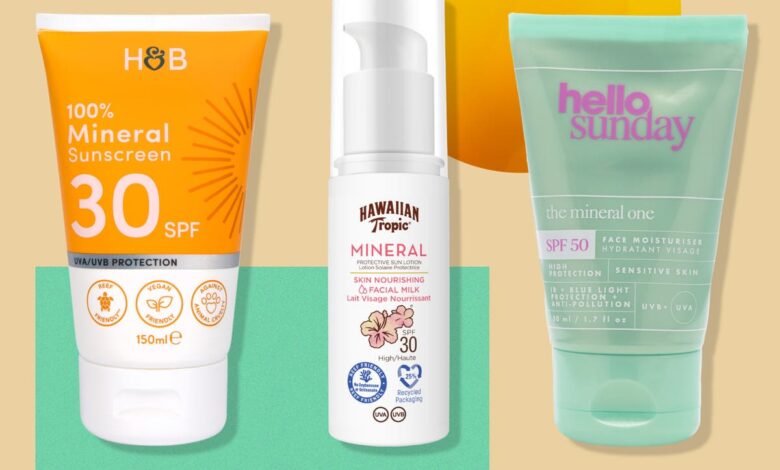11 best mineral sunscreens that are kinder to skin and the planet

By now we all know the importance of wearing SPF daily to protect our skin from the sun’s ageing and harmful UV rays. But what you may not know is that there are two different types of sunscreens: mineral and chemical. And the latter, used widely across beauty brands, has just been banned by major retailer Holland & Barrett – a UK first.
To understand the move, you have to know the difference between the two types of sunscreens – including how they work and their ingredients. Typically, chemical formulas (also known as synthetic) use filters like oxybenzone and octinoxate to absorb UV rays like a sponge so your skin doesn’t. They’re popular for their lightweight feel and being easy to apply.
However, more and more environmental studies reveal that these two chemical filters, among others, are toxic to coral reefs and marine life. And when, according to National Geographic, 14,000 tonnes of sun cream washes up into the oceans each year from bathing and swimming, that’s a lot of damage done.
This pollution to the world’s oceans is why the wellness retailer is following in the footsteps of places like Thailand and Hawaii, and banning chemical sunscreens containing these damaging ingredients. Instead, they’re favouring mineral formulas that don’t threaten reefs and wildlife.
In contrast, mineral formulas (also known as physical) use what’s being termed “reef-friendly” zinc oxide and titanium oxide filters to sit on the skin’s surface and block the rays getting to the skin – reflecting them rather than absorbing them.
Read more:
There are not just environmental benefits to choosing a mineral sunscreen over a chemical formulation. There are skin-benefits too. “Unlike chemical sunscreens, there is little chance of mineral products causing skin irritation – especially if you suffer from acne, eczema or sensitive skin,” explains Dr Adil Sheraz, consultant dermatologist.
It all sounds like a no-brainer, and that mineral formulas are the way to go, but unfortunately, they’ve fallen out of favour with consumers. Beauty brands have found easy-to-apply mineral formulations in the past hard to formulate and have often often been associated with leaving a thick white cast or a chalky finish, especially on darker skin tones.
Luckily, advances in cosmetic science mean the latest offerings have moved on from traditional formulations and are much easier to blend, xoffering a more invisible defence. So, to find the best mineral sunscreens we put the latest to the test…
The latest mineral sunscreens were trialled for a minimum of three days under the same skincare routine for the best results. We marked them on how easy they were to apply to the skin, how they felt on the skin and whether they left any grease or white cast. These are the ones worth spending your money on…





